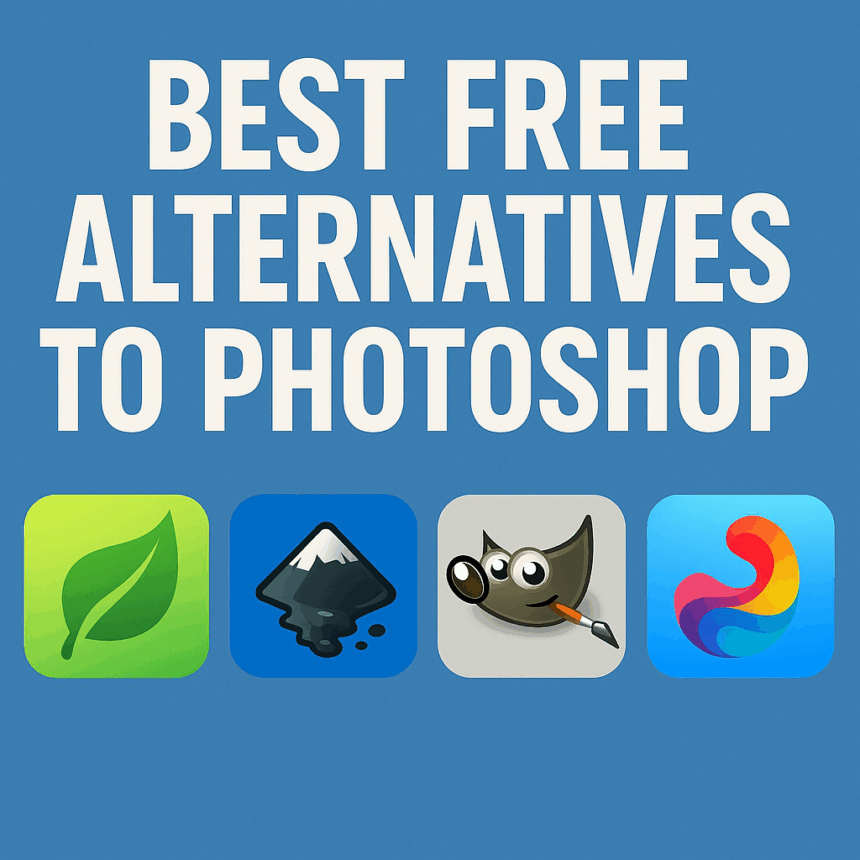In this article, I will explore the Best Free Alternatives To Photoshop that deliver potent editing capabilities at zero cost.
One way or another, a designer, photographer, or even someone just starting out will find these free services quite handy for photo editing, creating digital art, and for graphic designing.
Check out some of the top options such as Photopea, GIMP, Krita among others that meet your creativity needs.
Key Point & Best Free Alternatives To Photoshop
| Tool | Key Point |
|---|---|
| Photopea | Free online Photoshop alternative; supports PSD and smart object editing |
| GIMP | Open-source editor with advanced tools; ideal for complex photo editing |
| Krita | Best for digital painting and concept art; brush engine is a standout |
| Inkscape | Vector graphics editor great for logos and SVG files; free and open-source |
| Canva | User-friendly drag-and-drop design for social media & marketing materials |
| Desygner | Cloud-based design tool with templates; good for beginners and marketers |
| PIXLR | Fast online editor; AI-powered tools and great for quick image edits |
| Fotor | Easy photo enhancer with filters, HDR, and collage tools |
| MyEdit | Lightweight browser tool; basic AI-powered photo editing features |
| Sumo Paint | Cloud-based painting and photo editor with Photoshop-like UI |
1. Photopea
Photopea earns the title of the best free Photoshop alternative since it operates entirely online, accepting files in PSD, XCF, and Sketch formats.
Due to its smart objects, layer styles, and layer masks, sectioned editing prowess, it is one of the few highly regarded online editors that can still be considered professional.
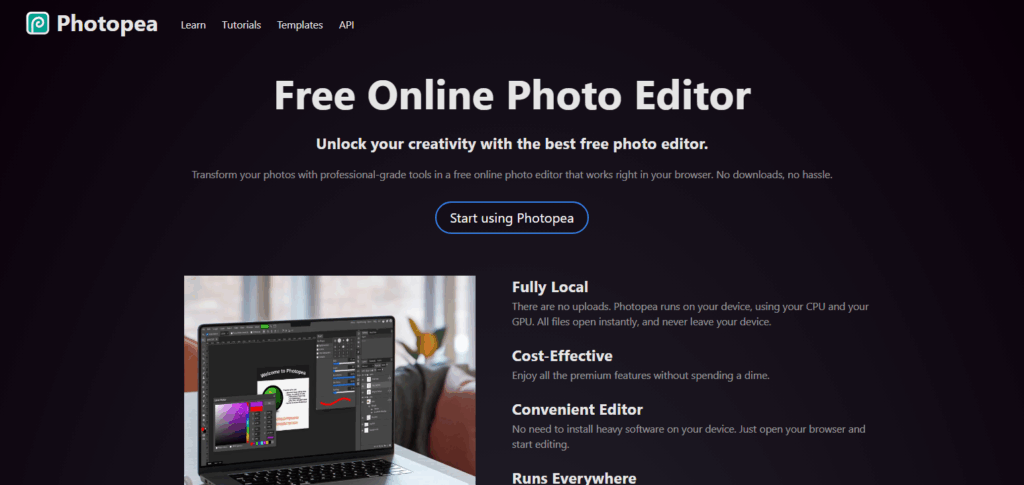
It is perfectly tailored for users that seek convenience and usability. Its UI nearly mirrors Adobe Photoshop, so learning to navigate it is easy.
Whether you need to edit pictures, design web pages or retouch images, you are guaranteed high quality results with no download required.
Photopea
Pros
- Works with PSD, Sketch and XD files.
- No installation required (browser-based).
- Familiar Photoshop-like interface.
- Responsive across devices.
Cons
- Performance lag while working with large files.
- Distracting ads.
- Limited capabilities offline.
2. GIMP
GIMP (GNU Image Manipulation Program) is currently the most popular open-source substitute for Photoshop. Its standout feature is the full user-level customization through plugins and scripts which makes possible adding extra functions beyond the available ones.
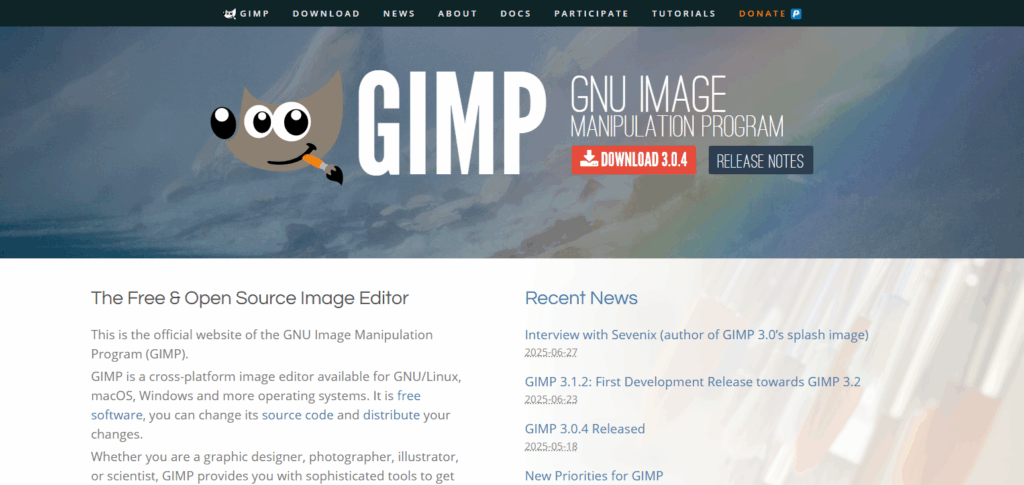
Considered a powerful all-in-one solution, GIMP offers advanced photo manipulation alongside color grading, digital painting, and even animation. GIMP supports a wide array of formats, and together with a dedicated community of developers and users, its features are continuously evolving.
GIMP’s unrestricted licensing translates to professional-grade image-editing power offered at no cost, appealing to serious editors who wish to have absolute control over their editing workflows.
GIMP
Pros
- Open source; no cost for use.
- Offers numerous plugins for extensions.
- Advanced tools for image editing.
- Robust community support.
Cons
- Learning phase is challenging.
- Outdated user interface.
- For prints, limited support for CMYK colors.
3. Krita
For illustrative and concept art work, digital artists need not look beyond Krita as the best free Photoshop alternative. While Photoshop centers around photo editing, Krita focuses on digital painting and offers an easy-to-navigate interface with more than 100 brush engines that can be customized and are equipped with real-time stabilizers.
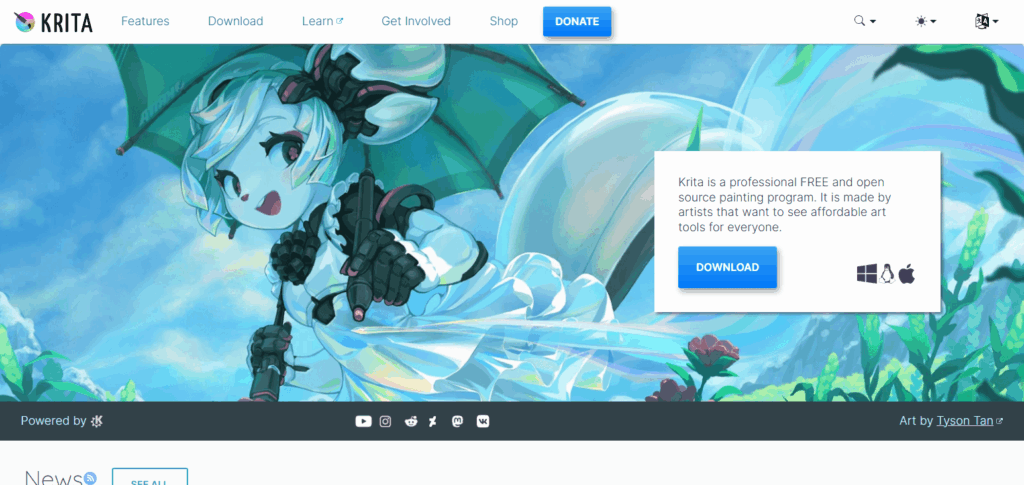
As it extends support for HDR painting, seamless texture generation, and perspective tools, it becomes critical for illustrators. With an open-source model dominated by community development, no premium features can be concealed behind paywalls, ensuring a holistic tool meant for creativity and not mere retouching.
For professionally expressive, painting tools tailored to their craft, artists find Krita to be far more advantageous than Photoshop.
Krita
Pros
- Great with digital painting and illustrations.
- Professional-level brush engine.
- Supports layers and animations.
- Free and open source.
Cons
- Not great for photographs.
- Overly complicated for many beginners.
- Some features lacking for graphic design.
4. Inkscape
When searching for a top-quality free substitute for Photoshop for vector graphic creation, Inkscape rises to the top of the list. Unlike Photoshop’s raster-based approach to image processing, Inkscape specializes in SVG creation, which makes it well suited for designing logos, icons, and any other scalable illustrations.

It has a sophisticated node-editing system, boolean operations, and path tools that rival Adobe Illustrator. Inkscape’s capabilities with text, filters, and extensions allow for complex digital artistry and full creative expression.
Since it is open source, its development costs are zero and there are no licensing fees. In contrast to bitmap-editing tools, focused users will find Inkscape a bombshell in terms of value, flexibility, and price.
Inkscape
Pros
- Leading the field in vector-based editing (SVG).
- Accurate path and node editing.
- Cross-platform and open-source.
- Strong support for extensions.
Cons
- Dealing with complex files results in slow performance.
- Absence of tools for raster image editing.
- User interface isn’t intuitive for all.
5. Canva
For those that require fast, eye-catching designs, Canva is the leading alternative to Photoshop. It is perfect for social media graphics, presentations, and posters thanks to its easy-to-use interface and built-in templates.
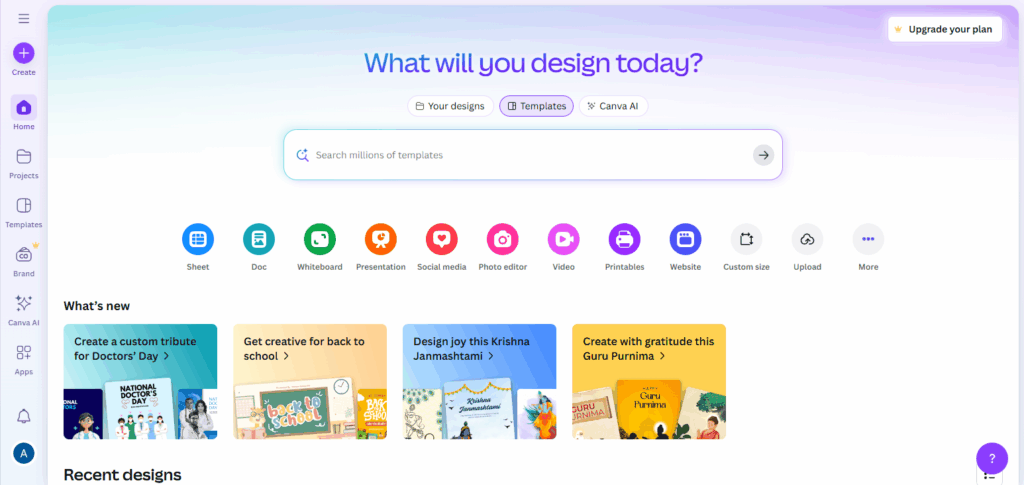
Even though it does not have the extensive editing capabilities of Photoshop, Canva’s usability and collaboration tools shine through.
You do not need to have any design experience to achieve professional results. Marketers, educators, and business owners stand to benefit the most from its quick turnaround times. For casual users and those short on time, its free plan offers unparalleled value.
Canva
Pros
- Templates and assets to choose from.
- Interface designed for users means no steep learning curve.* Great for creating social media images
- All-in-one collaboration tools available
Cons
- Low photo editing capability
- Most features require Pro plan
- Cannot edit images in high resolution
6. Desygner
Offering cloud-based design, Desygner tries to combine the robust features of a professional design application with the simplicity that beginners need. Desygner focuses on mobile editing and collaborative work unlike Photoshop.

It has brand asset management, an intuitive template generator, and exports to multiple formats. Photoshop’s focus on a rigid desktop environment means that its users cannot take advantage of editing on the go, and this is where Desygner’s strength lies.
Its ability to edit PDFs for free is also unique. It may not fulfill exacting editing precision needs, but it is an effective solution for small companies or individuals who want to take control of their personal branding and marketing designed documents quickly and simply.
Desygner
Pros
- Editor works well on mobile devices
- Supports brand kits, and has PDF editing capabilities
- Quick drafts for marketing materials
- Functions on multiple devices
Cons
- Offers less design options than Canva
- Design tools can be limiting
- Some assets have watermarks
7. PIXLR
PIXLR is quick editing software that is equipped with sophisticated cutting-edge technology features like AI. It is well suited for amateur editors who prefer using free software instead of paying for photoshop.
Outlined on the website offer two modes, for example, both PIXLR X and PIXLR E are accessible directly on the browser which requires no prior registration.
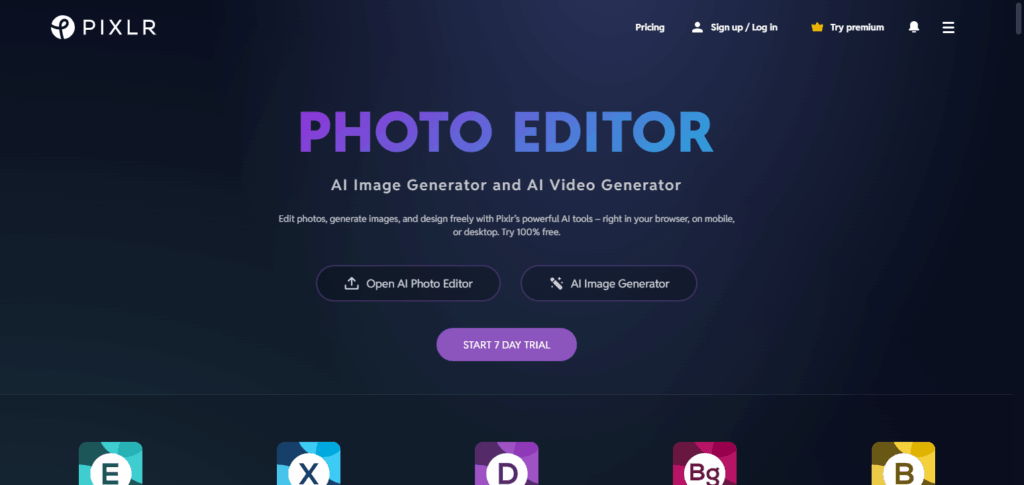
Some of its notable features include layer-based edits, background elimination, image overlays, as well as the application of filters.
Unlike Photoshop, PIXLR focuses more on simplicity and speed. While many programs do provide rather intensive editing features, PIXLR’s unique combination of AI and pro offerings allows users to optimize their photos swiftly on lighter software.
PIXLR
Pros
- Quick photo editing using the browser
- Uses AI for background and photo retouching
- Beginners and experienced users both catered to.
- No account required
Cons
- Basic options for advanced layer styles
- Advertisements for free users
- Online access required
8. Fotor
Fotor functions on the principle of an alternative to photoshop and fulfills the purpose excellently. The interface offers precise controls to improve or retouch pictures seamlessly.
Fotor does not require much effort to manage unlike photoshop that heavily relies on technical knowledge. The smart filters and batch processing make it a breeze to perform edits in bulk with ease.
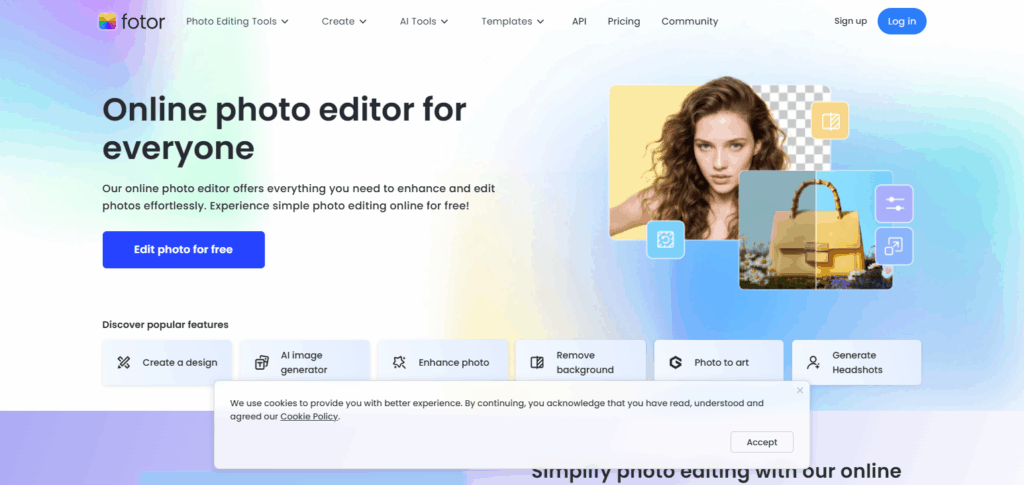
Marketers, entrepreneurs and other professionals who rely on social media and blogs would benefit most.
Its all in one model allows photo editing, creating collage images , designing all free of charge making Fotor more appealing. Due to its absolute focus on efficiency, it provides a streamlined solution for almost any creative task.
Fotor
Pros
- Applies photograph enhancements with a single click
- Provides HDR editing capabilities
- Excellent for collage and graphic design
- Easy to learn
Cons
- Limited detail to layer edits
- Pro upgrade necessary for some features
- Does not meet the needs of professionals
9. MyEdit
MyEdit serves as a browser-based photo editor that utilizes AI and provides sophisticated tools to perform background removal, color correction, object erasing, and photo enhancement.
Unlike Complex and feature rich Photoshop, MyEdit performs the most essential functionalities with a single click. Hence, it is catered towards users needing fast edits for social media or e-commerce.
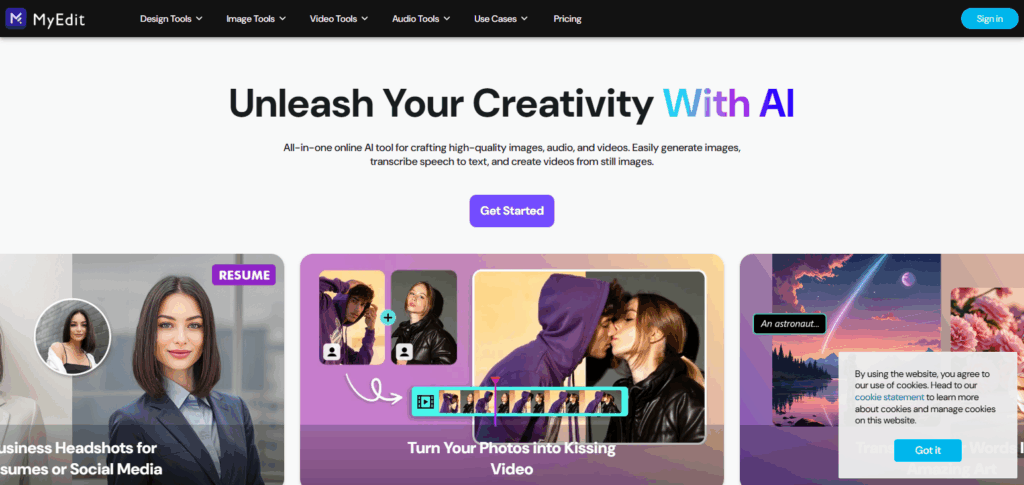
PolishImages utilizes MyEdit, as simplicity proves beneficial to those with no design background. Providing free access, responsive assistance, and decent for basic editing, MyEdit can be used from any device.
MyEdit
Pros
- Intuitive and efficient interface
- Removes background and objects using AI
- Use without creating an account
- Performs well even on lower-spec devices
Cons
- Simple editing features
- Limited in file formats offered
- Lacks layers and brush tools.
10. Sumo Paint
As a comprehensive online photo editor, Sumo Paint specializes in quick tasks and mimics Photoshop’s interface. It offers layers, filters, blending modes, an extensive range of brushes, making it appropriate for both design and painting.
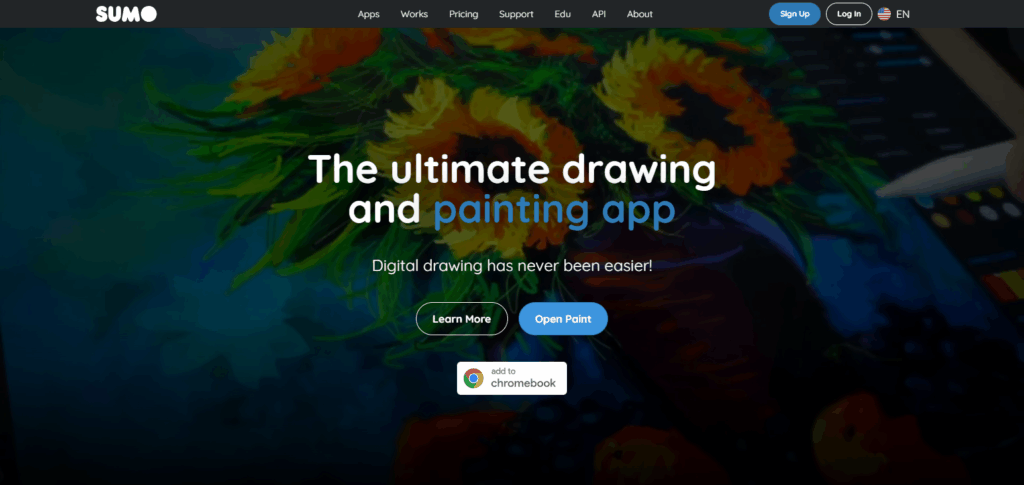
What sets Sumo Paint apart is the combination of editing and painting tools that is offered in browser. This makes it a great fit for students and designers looking for an affordable option without requiring heavy hardware.
Even while being offered for free, Sumo Paint stands out with its sleek interface providing both online and offline app access along with reliability and commanding performance.
Sumo Paint
Pros
- Similar arrangement and instruments as photoshop.
- Has both painting and editing functionalities.
- Available for use both online and offline.
- Good working speed and performance in browser.
Cons
- Contains advertisements in free version.
- Not suited for proficient photo manipulation tasks.
- Some people might consider the design outdated.
Conclusion
If powerful and affordable substitutes for Photoshop are what you seek, these free options are noteworthy for a multitude of creative purposes. For users who want a Photoshop-like experience in the browser with multilayer editing and PSD files support, Photopea works best.
GIMP and Krita offer greater comprehensive capabilities in photo editing and digital painting respectively, while Inkscape specializes in vector graphics. For fast and sleek graphics, Desygner and Canva are excellent choices.
PIXLR, Fotor, MyEdit, and Sumo Paint are tailored for those looking for simple and lightweight editing. Whatever your need—professional editing, casual designing, or illustrating—there is a free replacement for Photoshop on the internet specially catered to you.


